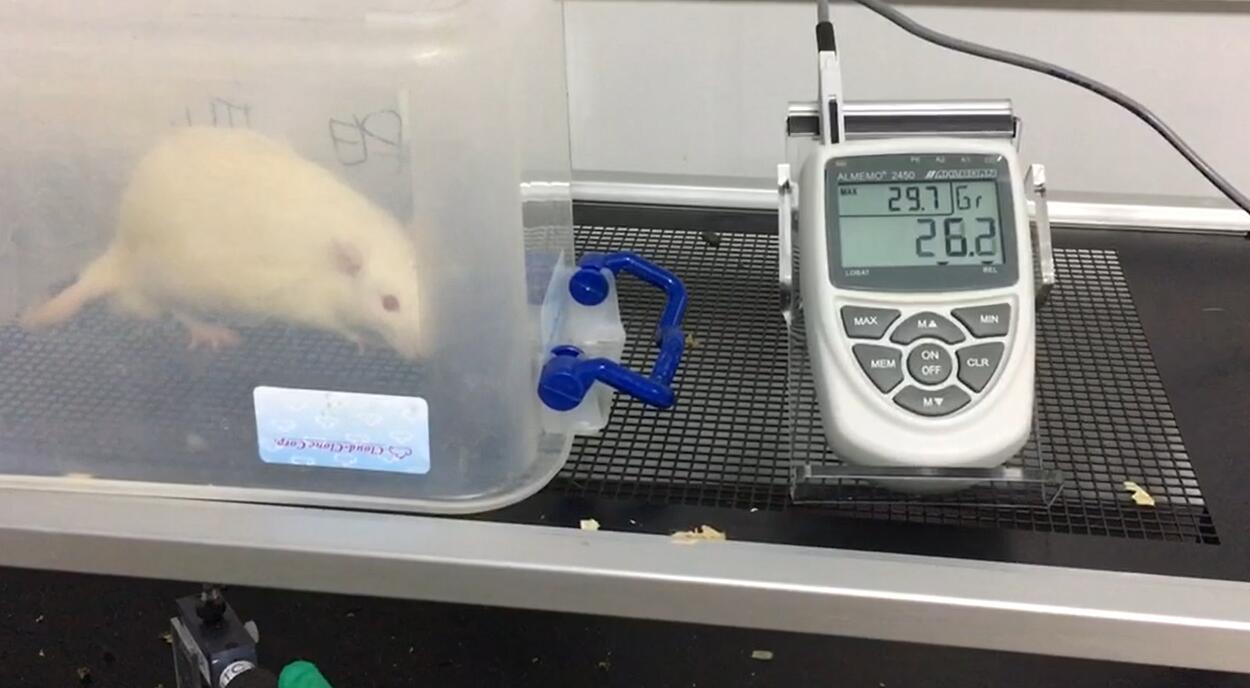Rat Model for Osteoarthritis (OA) 

Ostarthritis; Ostearthritis; OA
- UOM
- FOB US$ 140.00
- Quantity
Overview
Properties
- Product No.DSI587Ra05
- Organism SpeciesRattus norvegicus (Rat) Same name, Different species.
- ApplicationsDisease Model
Research use only - Downloadn/a
- CategorySkeletal, articular and cutaneous systems
- Prototype SpeciesHuman
- SourceInduced by Iodoacetic acid
- Model Animal StrainsSD Rats(SPF), healthy, male, 6~8W, body weight 180g~200g.
- Modeling GroupingRandomly divided into six group: Control group, Model group, Positive drug group and three Test drug group.
- Modeling Period4-6 weeks
Sign into your account
Share a new citation as an author
Upload your experimental result
Review

Contact us
Please fill in the blank.
Modeling Method
MIA modeling method: SD rats were fed in SPF environment, adaptive feeding for 7 days, and randomly grouped. Rats in model group and drug group were injected 0.2ml of iodoacetic acid into the joint cavity of rats. The control group was injected with normal saline into the joint cavity.
Model evaluation
Follow-up tests:
1.Activity status of SD rats was observed and body weight was recorded;
2.Mechanical Allodynia test;
Rats were placed on a metal mesh frame to adapt to the environment, and electron Von Frey wire was used to stimulate the skin surface of the rear claw vertically below, and the minimum force required to induce positive claw retraction was recorded as the claw retraction threshold. The pressure of foot contraction (g) was recorded and measured 4 times within a 2-minute interval. The median value obtained after excluding the maximum and minimum values was used as the pain threshold (g).
3. The width of the left knee joint was measured, and the surface conditions of cartilage gloss and color were observed for the separated synovium.
Pathological results
Pathological staining: the knee cartilage was decalcified, embedded in paraffin and sectioned. Then HE, Masson and Safranin-fixed green staining were performed to observe the structural changes of cartilage, and the pathological analysis and statistics were performed.
Cytokines level
Cytokines detection:
Cytokines in arthritis: Tumor necrosis factor α(TNF-α), interleukin 1β(IL-1β) and matrix metalloproteinase-3 (MMP-3) in the articular fluid of rats were detected by ELISA.
Serum cytokines: IL-4, IL-10, IL-1β, TNF-α levels.
Biochemical test: Superoxide dismutase (SOD) and malondialdehyde (MDA) were detected in serum.
Statistical analysis
SPSS software is used for statistical analysis, measurement data to mean ± standard deviation (x ±s), using t test and single factor analysis of variance for group comparison , P<0.05 indicates there was a significant difference, P<0.01 indicates there are very significant differences.
Giveaways
Increment services
-
 Tissue/Sections Customized Service
Tissue/Sections Customized Service
-
 Serums Customized Service
Serums Customized Service
-
 Immunohistochemistry (IHC) Experiment Service
Immunohistochemistry (IHC) Experiment Service
-
 Small Animal In Vivo Imaging Experiment Service
Small Animal In Vivo Imaging Experiment Service
-
 Small Animal Micro CT Imaging Experiment Service
Small Animal Micro CT Imaging Experiment Service
-
 Small Animal MRI Imaging Experiment Service
Small Animal MRI Imaging Experiment Service
-
 Small Animal Ultrasound Imaging Experiment Service
Small Animal Ultrasound Imaging Experiment Service
-
 Transmission Electron Microscopy (TEM) Experiment Service
Transmission Electron Microscopy (TEM) Experiment Service
-
 Scanning Electron Microscope (SEM) Experiment Service
Scanning Electron Microscope (SEM) Experiment Service
-
 Learning and Memory Behavioral Experiment Service
Learning and Memory Behavioral Experiment Service
-
 Anxiety and Depression Behavioral Experiment Service
Anxiety and Depression Behavioral Experiment Service
-
 Drug Addiction Behavioral Experiment Service
Drug Addiction Behavioral Experiment Service
-
 Pain Behavioral Experiment Service
Pain Behavioral Experiment Service
-
 Neuropsychiatric Disorder Behavioral Experiment Service
Neuropsychiatric Disorder Behavioral Experiment Service
-
 Fatigue Behavioral Experiment Service
Fatigue Behavioral Experiment Service
-
 Nitric Oxide Assay Kit (A012)
Nitric Oxide Assay Kit (A012)
-
 Nitric Oxide Assay Kit (A013-2)
Nitric Oxide Assay Kit (A013-2)
-
 Total Anti-Oxidative Capability Assay Kit(A015-2)
Total Anti-Oxidative Capability Assay Kit(A015-2)
-
 Total Anti-Oxidative Capability Assay Kit (A015-1)
Total Anti-Oxidative Capability Assay Kit (A015-1)
-
 Superoxide Dismutase Assay Kit
Superoxide Dismutase Assay Kit
-
 Fructose Assay Kit (A085)
Fructose Assay Kit (A085)
-
 Citric Acid Assay Kit (A128 )
Citric Acid Assay Kit (A128 )
-
 Catalase Assay Kit
Catalase Assay Kit
-
 Malondialdehyde Assay Kit
Malondialdehyde Assay Kit
-
 Glutathione S-Transferase Assay Kit
Glutathione S-Transferase Assay Kit
-
 Microscale Reduced Glutathione assay kit
Microscale Reduced Glutathione assay kit
-
 Glutathione Reductase Activity Coefficient Assay Kit
Glutathione Reductase Activity Coefficient Assay Kit
-
 Angiotensin Converting Enzyme Kit
Angiotensin Converting Enzyme Kit
-
 Glutathione Peroxidase (GSH-PX) Assay Kit
Glutathione Peroxidase (GSH-PX) Assay Kit
-
 Cloud-Clone Multiplex assay kits
Cloud-Clone Multiplex assay kits







